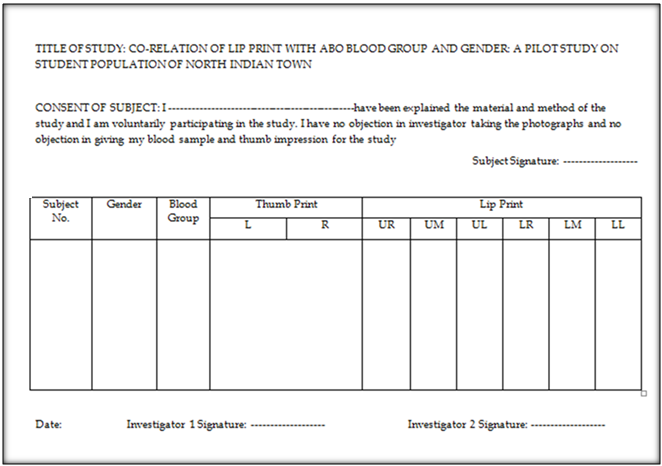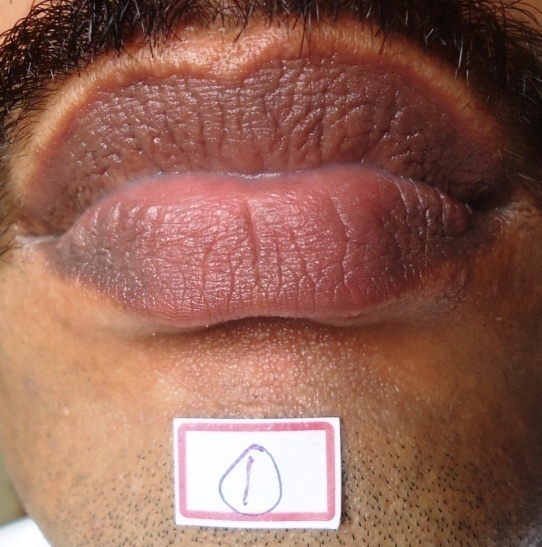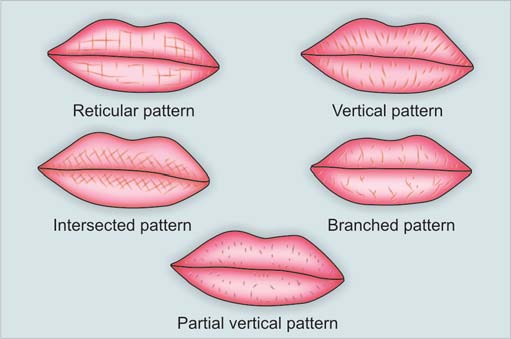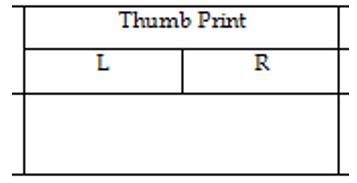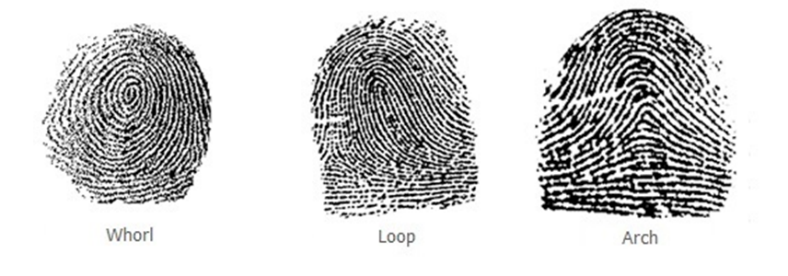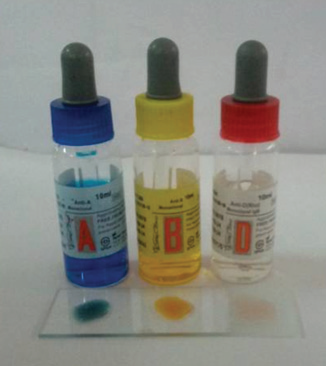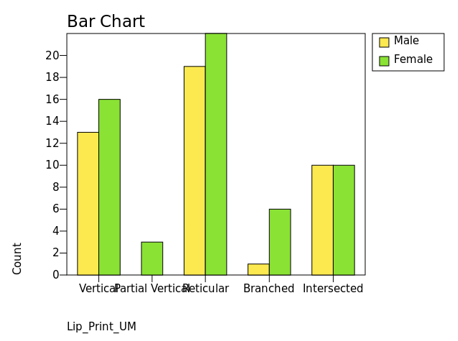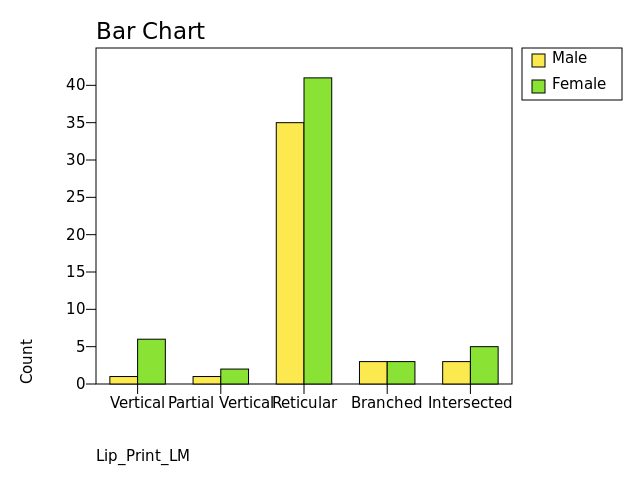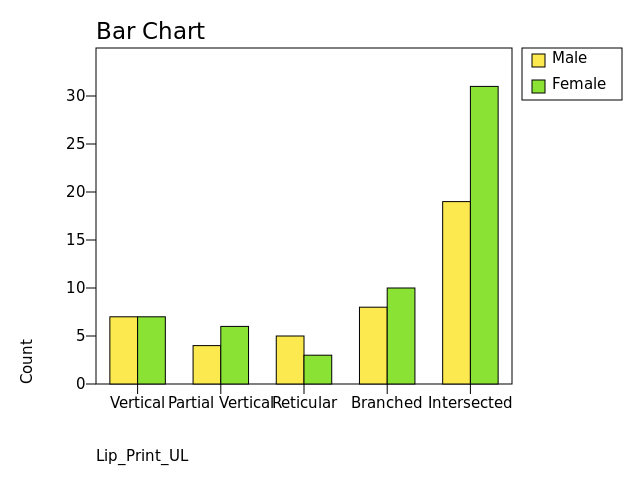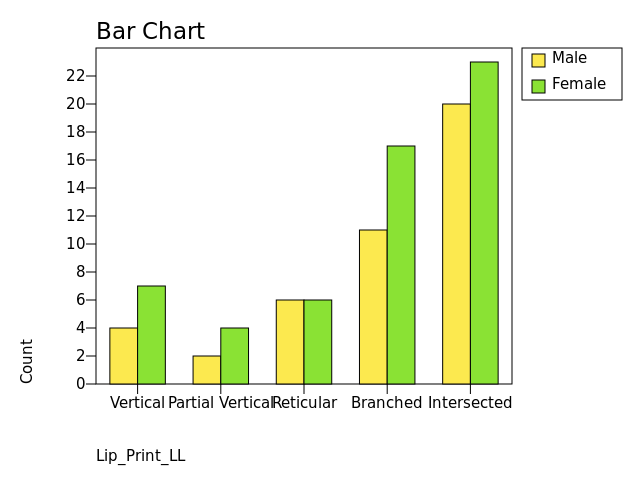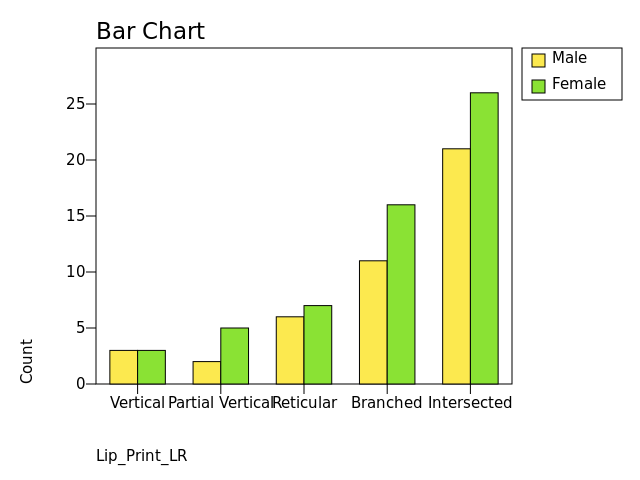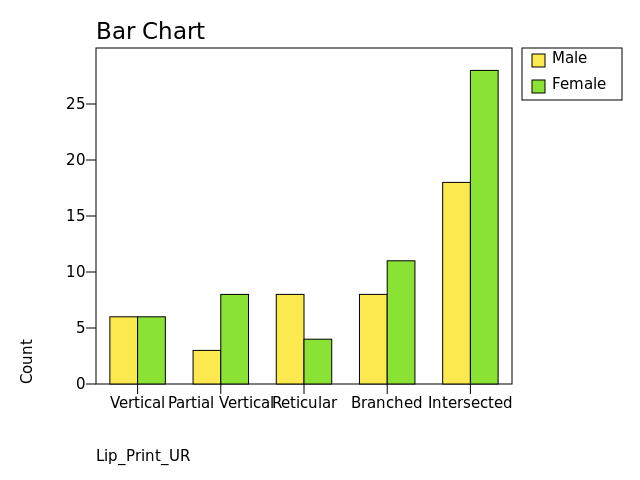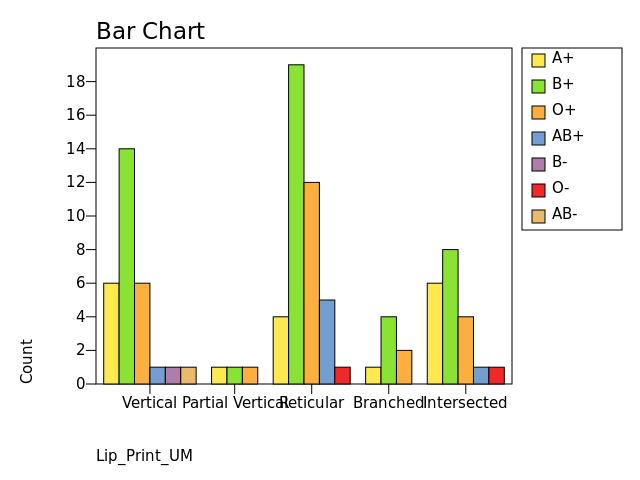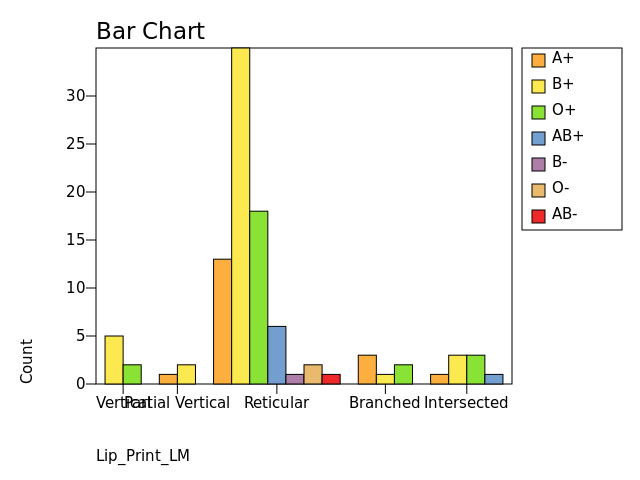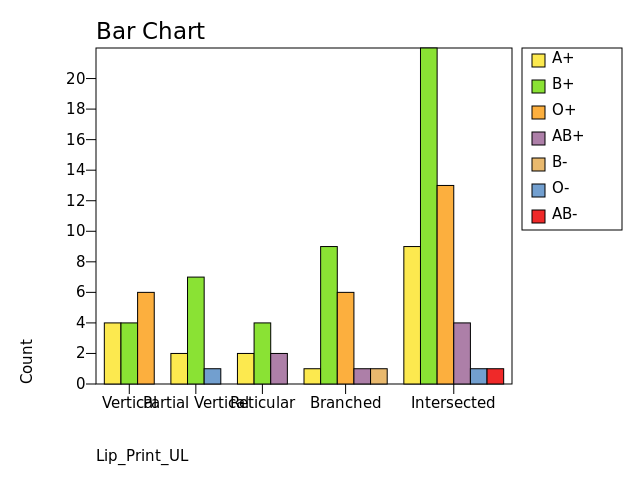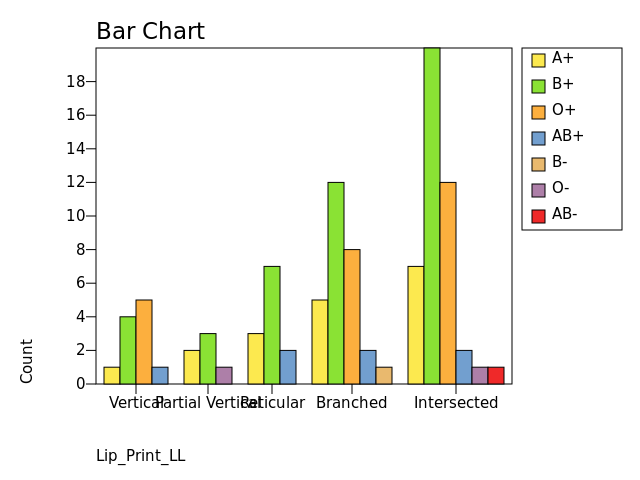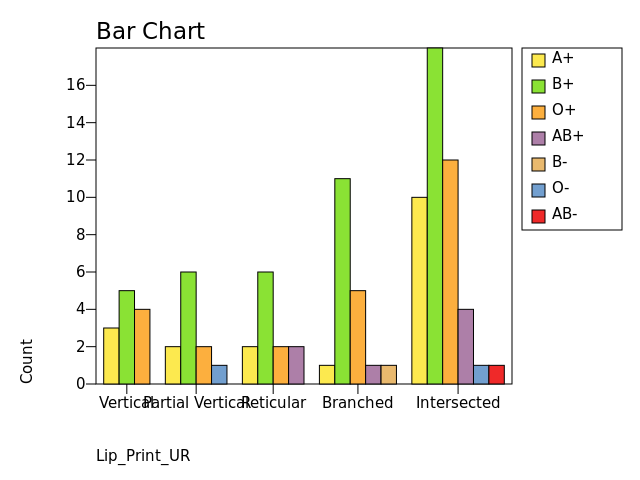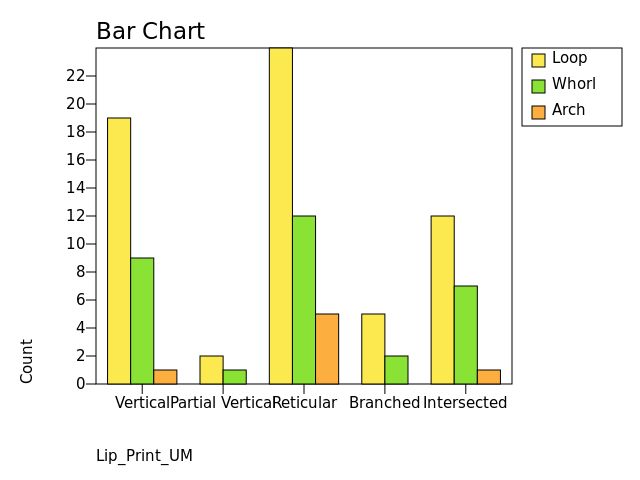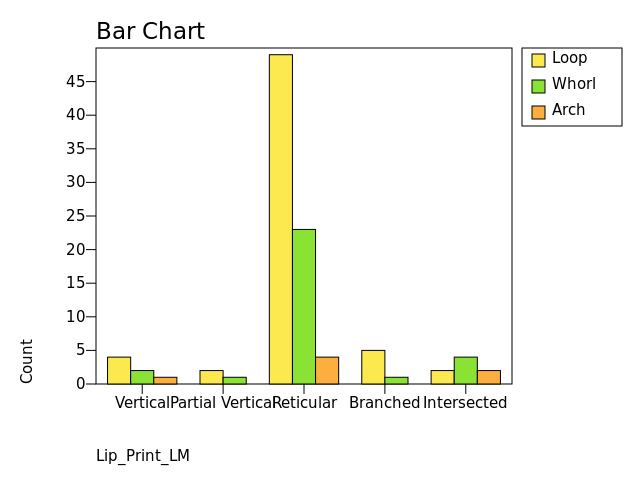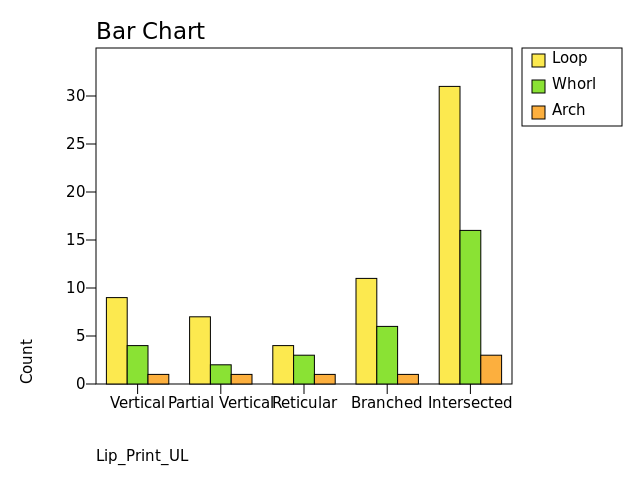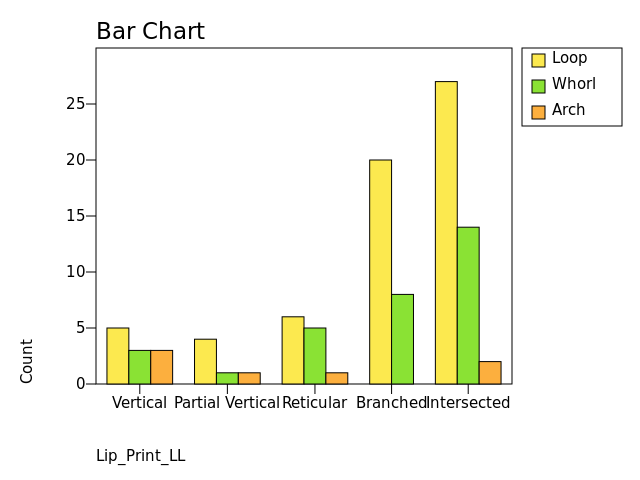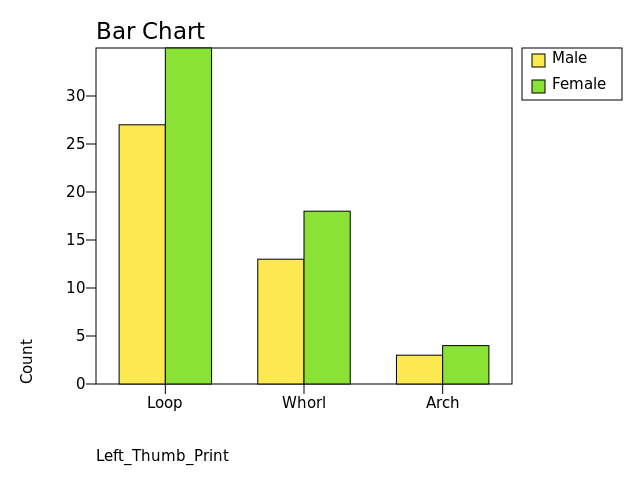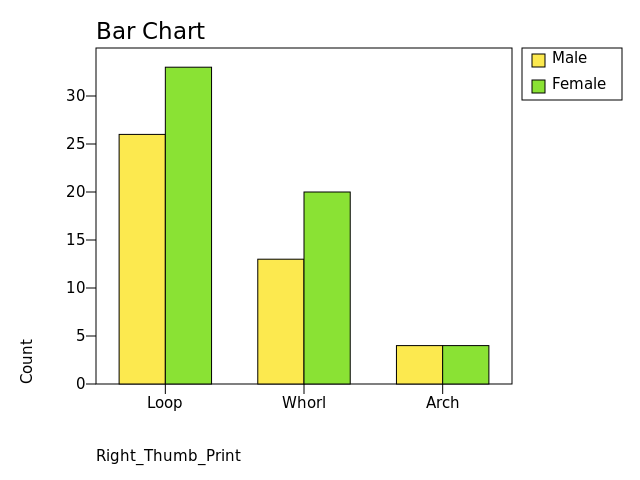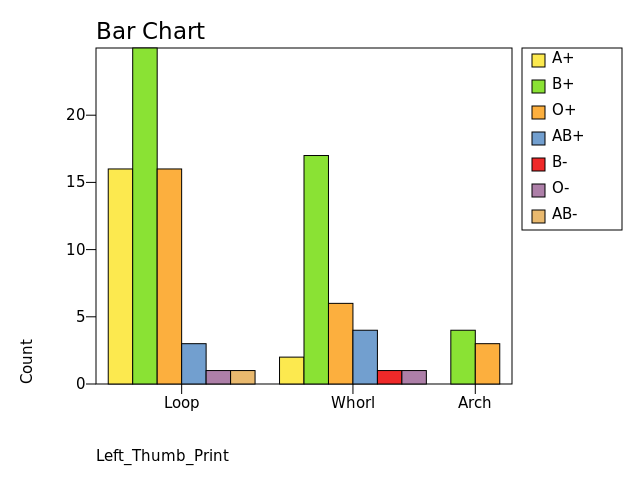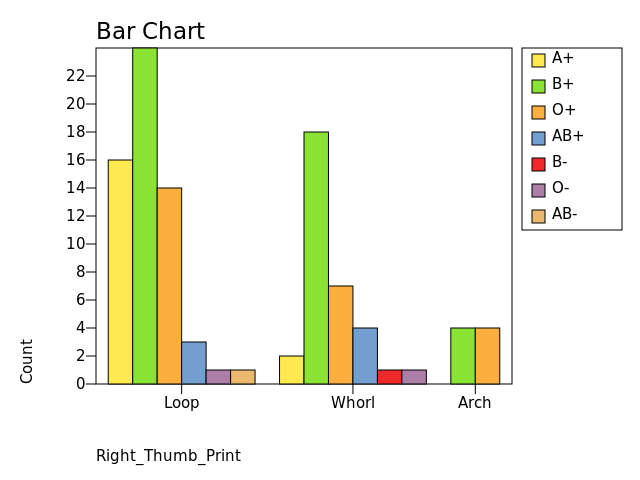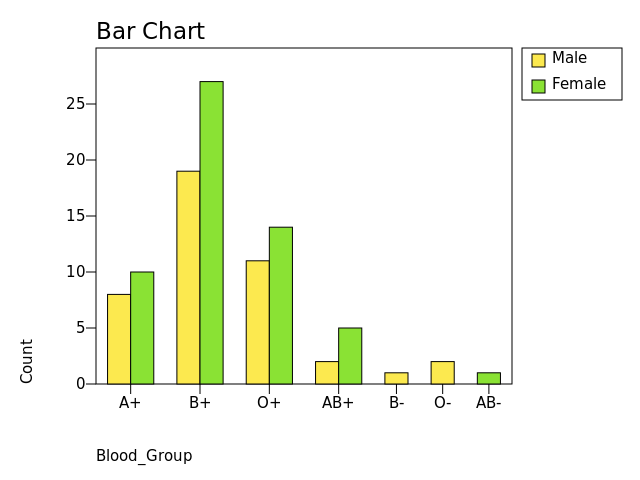Introduction
The imprints produced by the Wrinkles and grooves visible on the lips are known as Lip Print. The name “Lip Print” was given by Tsuchihashi as ‘Sulci labiorum rubrorum’.
The blood group system was discovered in 1901 by Karl Landsteiner. Total, 19 major groups have been identified in humans. Among these only “ABO” and “Rhesus” groups are used in most of the time.1, 2, 3
The presence of antigen in plasma, “ABO” system is classified as A, B, AB, and O blood groups. The presence of “D” antigen in plasma, “Rhesus” system is classified into “Rh +ve” and “Rh −ve.” Studies of association between lip prints, blood groups and gender are scanty in the literature. There are other reference data available on various forms of personal identification such as fingerprints, lip prints etc. which are of paramount importance. 1, 4, 5
Objective
The objective of the present study is -
To find the association between lip print patterns and ABO blood groups among students in a North Indian town.
To provide preliminary data for future larger-scale studies on the interrelation between lip prints, ABO blood groups, and gender in diverse populations.
To find potential association between lip print patterns and gender in the student population.
To explore the feasibility of lip print analysis as a tool for determining ABO blood groups and gender identification in forensic and anthropological contexts.
To contribute to the understanding of the genetic and morphological variations in lip prints within the North Indian demographic.
Materials and Methods
Ethical clearance was obtained prior to the study from the ethical committee. Around 200 students aged between 18 years to 25 years were enrolled in the study. Students belonging to north Indian states were taken as inclusion criteria. Written informed consent was procured from each subject. (Figure 1). The purpose and process of the study was described by a single calibrated trained interviewer to the participants and recorded lip print, thumb print and blood groups. The examination was done on a simple chair and in abundant daylight conditions.
Exclusion criteria
The subjects under orthodontic treatment.
Subject with any kind of abnormality like congenital lip abnormalities, inflammation, or trauma of lips
Individuals from non-north Indian origin
Techniques – The various techniques involved in present study are –
Techniques for Lip Print
Lips were cleaned with the tissue paper with ensuring that subjects were sitting in a relax position.
Ensured that lips should not be left with any traces of the tissue paper
Lip prints was recorded using Digital photographic method.
The photographs were zoomed to triple size (Figure 2) and divided into three quadrants for both lower and upper lip (Figure 4) for an accurate estimation of the lip prints patterns using modified Tsuchihashi and Suzuki method 2, 3, 4 (Figure 3).
Techniques for thumb prints
The left and right thumb was cleaned with tissue paper.
The subjects were made to roll the tip of their thumb across the surface of ink-stained pad (Figure 4), ensuring that the ink covered the entire pattern area.
The thumb was then transferred to proforma (Figure 5) to obtain the print and analysed using magnified hand lens (Figure 6)
Figure 5
Figure 4 Ink-stained Stamp Pad on which thumb tip were rolled to analyse thumb prints patterns.
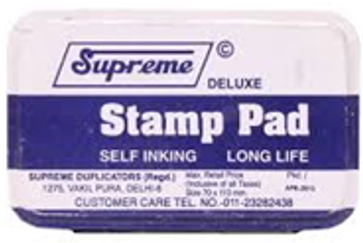
Techniques of blood group determination
Blood group was determined using standard technique of antigen antibody reaction (Figure 8) using anti-A, anti-B, and Anti-Rh sera
Results
Among the total of 200 north Indian students aged between 18 years to 25 years, lip print in various quadrants was compared with gender, blood groups and thumb print are compared and interpretation was made.
Interpretations
Lip pattern verses gender
On comparing, lip patterns in various quadrants and gender, it was found that the reticular pattern is highest in upper middle and lower middle (Figure 10) quadrants of male and female In upper left (Figure 11), lower left (Figure 12), lower right (Figure 13), lower middle (Figure 14), and upper right (Figure 15) quadrants, intersected pattern is found highest in male and female as compared to other lip prints.
So, in our study we have established that reticular and Intersected pattern were the most predominant in both gender subjects.
The results were similar to the result shown by Multani et al (predominant Intersected pattern among male). And opposite to the study done by Gondivkar et al. (Branched Pattern) and by Multani et al (Vertical in female)
Blood group verses lip prints
On understanding ABO and Rh blood group system, we have seven types of blood groups namely, A+, B+, B-, O+, O-, AB+, AB-. On comparing various lip pattern in several quadrants with these blood groups, it had been established that reticular pattern is highest in individual with B+ blood group in upper middle (Figure 16) and lower middle (Figure 17) quadrants. In Upper left quadrants, it has been perceived that intersected lip print is highest in B+ blood group person (Figure 18). In lower left (Figure 19), lower right (Figure 20 ) and upper right (Figure 21) quadrants similar results are seen as in upper left quadrant.
Thumb print verses lip prints
A thumb print is an impression or print made by thumb left by the friction ridges of a human thumb. Human fingerprints or thumbprints are detailed, unique feature of an individual life and long-term marker of human identity. There are various patterns form by thumb print named as loop, whorl, arch. In our study various quadrants of lip print are corelated with various thumb print pattern.
In the upper middle quadrant (Figure 22) part of lip print, the loop pattern of thumb print, is showing highest reticular pattern. The same results encountered in lower middle quadrant (Figure 23) in lip print.
On comparing upper left quadrant part of lip print and thumb print, intersected pattern is seen highest in individual with loop pattern of thumb print (Figure 23). Similar is the result on corelating lower left (Figure 24), lower right (Figure 25), upper right (Figure 26) quadrants with thumb print.
Thumb print verses gender
When right and left thumb print was corelated with gender, the loop pattern in both left (Figure 27) and right (Figure 28 ) thumb print is highest in female as compare to male.
Thumb print verses blood group
On associating left (Figure 29) and right (Figure 30) thumb print with blood group there is a strong corelation between individual with blood group B+ and loop pattern.
Thumb print verses blood group
On comparing Blood Group with gender, high corelation is established between male and female with Blood group B+. (Figure 31)
Discussion
Kumar A et al showed that type II and Category V are commonly recorded lip and palm pattern respectively in both the genders. B+ are the most common blood group in females O+ in male.6
A study done by Ashwinirani SR et al establishes that predominant lip print pattern observed in Kerala population was type IV (53%) and Maharashtra population was type II (42%). The difference between the two population was statistically significant (p<0.001). Subjects with A+ and O- blood groups had type II lip print predominance. Subjects with B+, AB+ and O+ blood groups had type IV predominance. The lip print patterns do not show any correlation in ABO blood groups.7
Kathuria NS et al showed complete vertical-1 patterns (46%) followed by Reticular-4, Intersecting-3, Undetermined-5, Incomplete vertical-1” and Branched-2 in most individual. Maximum number is of Loop fingerprint pattern which is followed by whorl, arch and composite which is seen in few individuals. A strong corelation is seen between lip print patterns and O positive blood group. Loop patterns are encountered in maximum individual followed by whorl, arch and composite.
The most common lip and palm pattern recorded was Type II and Category V respectively in both the genders. The most common blood group of females obtained in the present study was B+ whereas in males it was O+ 8
Sandhu H et al revealed that the B+ blood group was noted as most common in both genders while least common were A- among males and AB- in females. Type II lip pattern was most predominant while the least common was Type I' in males and Type I' and Type V in females. The UL fingerprint pattern was the most common, while RL was least noted in both genders. All the fingerprint patterns showed correlation with different lip print patterns. A correlation was found between different blood groups and lip print patterns except Type I (vertical) lip pattern. A positive correlation was observed between all the blood groups and fingerprint patterns, except for RL pattern. 9
Verma P et al explored the prominence of Type II (branched) lip pattern. They found that B+ blood group was most common in both genders. No correlation is shown any correlation between ABO blood groups, gender and lip pattern. 10
Sharma et al. concluded that Vertical and Partial Vertical lip patterns were most seen in female and that Reticular was seen most commonly in males. 11
Patel et al. stated that Vertical was the most prominent pattern among male subjects and Partial Vertical among female subjects. 12
A study done by Srilekha et al. showed the predominance of Vertical in females and males are having Vertical and Reticular predominance. These results is because of inter- observer mystification in the classification of reticular and intersecting types. 13
Various studies 14, 15, 16 have shown that the lip print patterns formed revealed a population wise dominance that is a particular population is showing a predominance of a particular lip print type which is potentially useful tool for identification.
Conclusion
The present study concluded that the Reticular pattern was the most predominant lip print pattern followed by Intersected and Branched Pattern in both genders. B+ve blood group was predominant among subjects. Loop pattern was the most predominant thumb print. There was significant co-relation between left and right thumb prints. No statistical correlation of lip print pattern with gender (P value 0.65), thumb print pattern (P value 0.56) and ABO blood groups (P value 0.841) are shown here.

